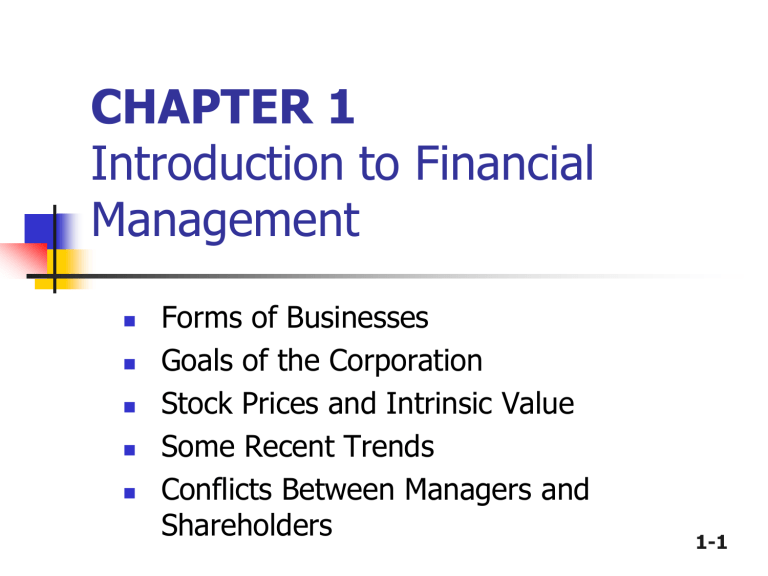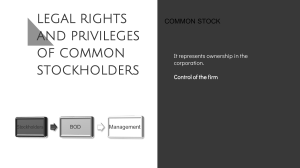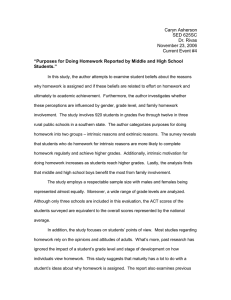
CHAPTER 1 Introduction to Financial Management Forms of Businesses Goals of the Corporation Stock Prices and Intrinsic Value Some Recent Trends Conflicts Between Managers and Shareholders 1-1 Alternative Forms of Business Organization Proprietorship Partnership Corporation 1-2 Proprietorships & Partnerships Advantages Ease of formation Subject to few regulations No corporate income taxes Disadvantages Difficult to raise capital Unlimited liability Limited life 1-3 Corporation Advantages Unlimited life Easy transfer of ownership Limited liability Ease of raising capital Disadvantages Double taxation Cost of set-up and report filing 1-4 Financial Goals of the Corporation The primary financial goal is shareholder wealth maximization, which translates to maximizing stock price. Do firms have any responsibilities to society at large? Is stock price maximization good or bad for society? Should firms behave ethically? 1-5 Factors that affect stock price Projected cash flows to shareholders Timing of the cash flow stream Riskiness of the cash flows 1-6 Stock Prices and Intrinsic Value In equilibrium, a stock’s price should equal its “true” or intrinsic value. To the extent that investor perceptions are incorrect, a stock’s price in the short run may deviate from its intrinsic value. Ideally, managers should avoid actions that reduce intrinsic value, even if those decisions increase the stock price in the short run. 1-7 Determinants of Intrinsic Value and Stock Prices (Figure 1-1) 1-8 Some Important Trends Recent corporate scandals have reinforced the importance of business ethics, and have spurred additional regulations and corporate oversight. The effects of changing information technology have had a profound effect on all aspects of business finance. The continued globalization of business. 1-9 Conflicts Between Managers and Stockholders Managers are naturally inclined to act in their own best interests (which are not always the same as the interest of stockholders). But the following factors affect managerial behavior: Managerial compensation plans Direct intervention by shareholders The threat of firing The threat of takeover 1-10 Responsibility of the Financial Staff Maximize stock value by: Forecasting and planning Investment and financing decisions Coordination and control Transactions in the financial markets Managing risk 1-11 1-12 1-13 1-14



